The Dell Venue 8 7000 Series Review
by Brandon Chester on March 12, 2015 8:00 AM EST- Posted in
- Tablets
- Dell
- Android
- Mobile
- Venue 8 7000
Software
It could be said that software has always been something of a pain point for Android tablets. However, before discussing the application situation which is out of Dell's control, it's worth talking about the software that comes on the Venue 8 itself. The first thing users will notice is that despite being a flagship device launching after the release of Android Lollipop, the Venue 8 still runs Android 4.4.4 KitKat. Dell has promised that there will be a future update to Lollipop, but no concrete time frame was given and so users could be waiting for quite some time.
Unfortunately, there are some parts of the KitKat interface that look quite dated. The Tron blue on sliders, window borders, and buttons had run its course long before it was replaced in Lollipop, and seeing it re-appear after using Lollipop for quite some time is jarring. Other areas like the keyboard also look dated and don't fit in well with any applications that have been updated to align with Google's Material Design principles. Thankfully, applications like the keyboard that have been moved over to Google Play can be updated and switched to their new Material Design interfaces. Unfortunately, functional issues aren't as easily addressed in this manner. An example is how the notification shade and quick toggles are segmented into separate areas, which feels downright archaic after using Lollipop.
Dell has not made a great number of modifications to Google's Android KitKat interface. The launcher and settings applications have been given a turquoise texture for their background which I actually consider to be more aesthetically pleasing than the old Tron blue gradient in the case of the settings application. If users are unhappy with Dell's changes, they'll be in a similar situation to the keyboard where they can simply download the Google Now Launcher from Google Play and have the same interface as any users who are running Lollipop.
The decoupling of many applications from Android has done a great deal to reduce issues with interface and feature fragmentation introduced by not having the latest OS updates. Unfortunately, core applications like Settings and sections of the interface like the status bar and notification shade are always reminders that your device is running an outdated version of Android, and so I hope Dell is able to ship a Lollipop update sooner rather than later.
As for preinstalled applications, there are a number of them, including several Dell branded applications like Dell Cast and My Dell. None of these apps can be uninstalled, and it's especially concerning because after the space taken up by the OS, storage formatting, and preinstalled applications, there's only 9.12GB free for the user to use. While this can be expanded via MicroSD, it's not a solution for installing apps, and installing just a few large AAA games will fill the Venue 8 up quickly. Of the preinstalled applications, I recommend immediately disabling McAfee Security and MaxxAudio.
In addition to these preinstalled apps, the initial setup for the Venue 8 presents you with the screen shown above. I'm completely okay with the idea of offering potentially useful applications to be optionally installed during the setup process, and I think every single preinstalled application that comes on top of the stock Android apps should be offered in the same manner, unless it's necessary to use a certain hardware feature.
The Application Situation
One of the primary criticisms of Android tablets over the years has always been that the library of applications that are actually optimized for large screen devices is small, with the number of iPad applications usually taken as the reference point. There are a number of factors that have contributed to this, and it's worth mentioning them before looking at the tablet application situation currently on Android.
One of the reasons that developers may feel less compelled to make applications with special tablet interfaces on Android is actually due to the fact that Android has application scaling in the first place. Unlike on the iPad where applications made only for the iPhone look pixelated and display in a window, applications on Android will scale to fill an entire tablet display. The fact that phone applications aren't essentially unusable on Android tablets can definitely be a factor in developers preferring to focus on adding new features and fixing bugs rather than creating a specialized interface.
Another issue that seems to seldom be discussed is the aspect ratio and orientation of Android tablets. Generally, Android tablets have used a 16:10 aspect ratio, and their native orientation has been portrait for 7 to 8 inch tablets, and landscape for larger ones. While the 16:10 aspect ratio is better for watching videos than the 4:3 aspect ratio used on a select few tablets, its advantages don't go far beyond that. It's more difficult to fit dual-pane interfaces onto the screen in portrait mode, and there's a lack of vertical space to work with in landscape mode. The more narrow screen profile makes it difficult to build a common interface for tablets that expands when put into landscape without having to change significantly from the portrait interface. It's no surprise that Google has moved to 4:3 with the Nexus 9, but by this point most applications simply use their phone interface which will have proportions that scale fairly well to 16:10 in portrait.
The third issue, and the one that I find to be the most significant and shocking is Google's own leadership in this space. During my time with the Venue 8, I actually found that the most poorly designed applications were ones made by Google. While I could find some third party applications like Flipboard and Skype that at least attempt to have good tablet interfaces, every Google application except for Gmail did not even attempt to present a suitable tablet interface.
Above you can see the Google Play application on the Venue 8 compared to its appearance on the Nexus 6. While the user with the Venue 8 has to carry around a significantly larger device, they're not getting much use out of it with regards to the amount of information they see on screen. This almost comically large interface exists throughout the Google Play application, as well as many of Google's other apps.
The Hangouts app is a good example of both the issues with the 16:10 aspect ratio in making tablet applications, as well a somewhat shocking lack of focus on Android tablet apps from Google. As you can see above, the Hangouts application on Android tablets is essentially an enlarged version of the phone application, with more conversations visible due to the size of the display.
The iOS application is completely different from its phone counterpart, with a segmented layout that allows the list of conversations to be seen alongside an open conversation. This is a common interface for messaging application on iPad, and it would be quite cramped if attempted on a 16:10 device in portrait mode. However, in landscape mode both tablets should be capable of displaying a segmented view, yet Google has done no such thing with the Android app and simply has it stretch out horizontally. It's honestly an embarrassing situation for what should be the prime examples for developers of how to do tablet apps correctly on Android.
However, as I said earlier, there are notable examples of popular apps that have embraced the ability of Android tablets to display much more information than smartphones. Flipboard is a good example. It shows more tiles than its smartphone counterpart in portrait, and has a special interface for landscape that doesn't even exist in the smartphone layout. While it doesn't show quite as much text on the tiles as the iPad app due to the limited number of vertical pixels when using a 16:10 display in landscape, it's still a great tablet application on Android and something I would point to as an example for other developers to look at.
The issues with tablet applications is not something that Dell or any other tablet vendor can control, but it's something that needs to be discussed so users are aware of what they're getting into. I honestly can't lay any of the blame with third party developers on Android either, because they've been put in a difficult position by the more narrow 16:10 aspect ratio of these devices, and have had absolutely no leadership from Google on how to make great apps. If Google can't be bothered to do it, I don't see how other developers can be expected to. My fear is that even with Google making improvements to apps like Gmail, that it may be far too late to get proper support from developers at this point.


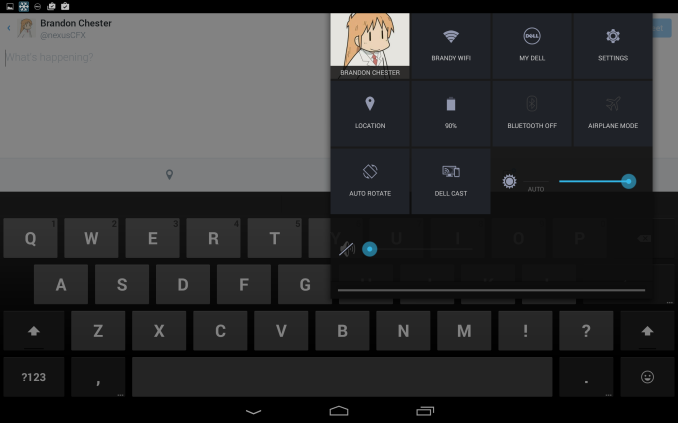
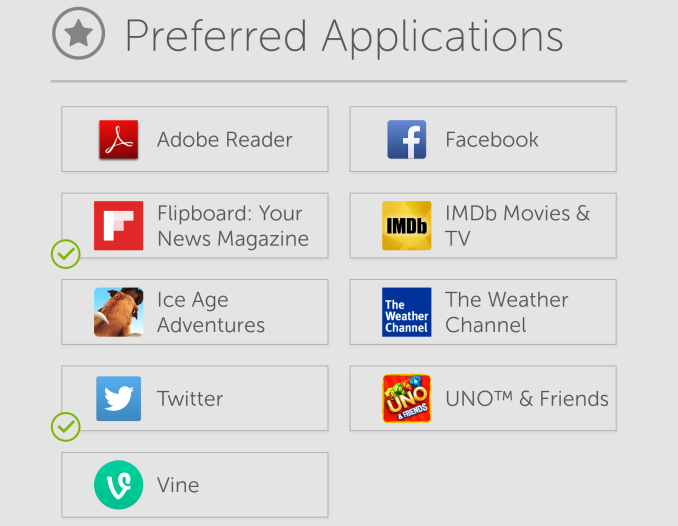
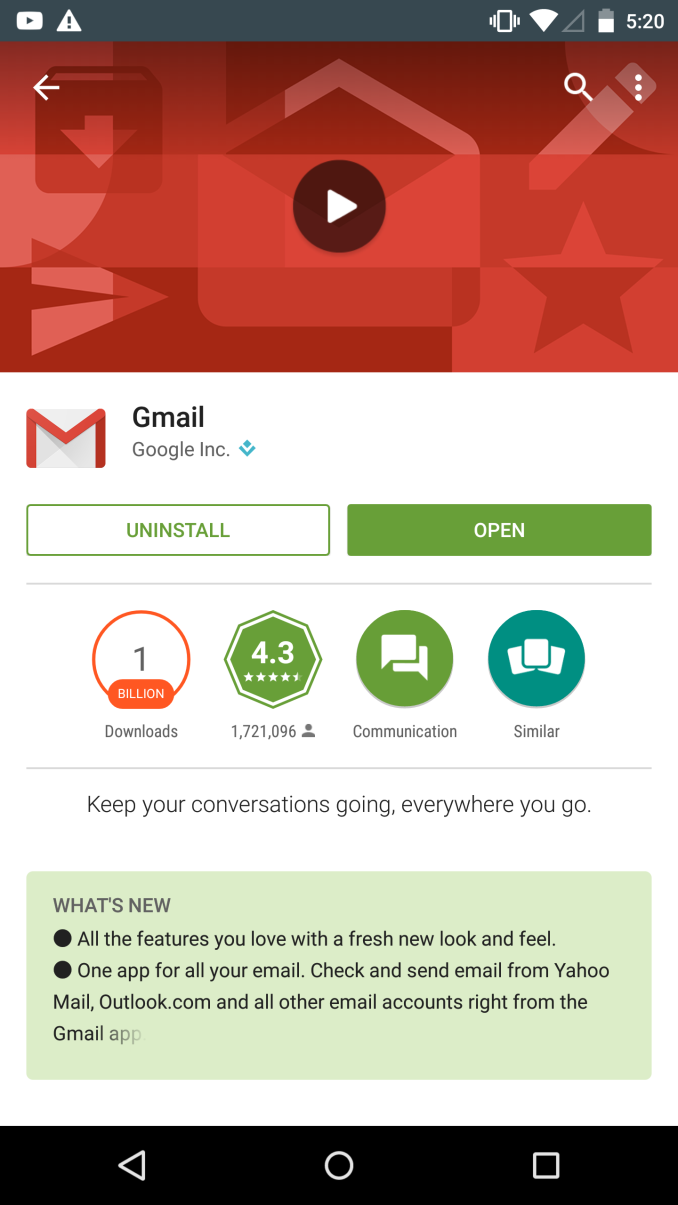
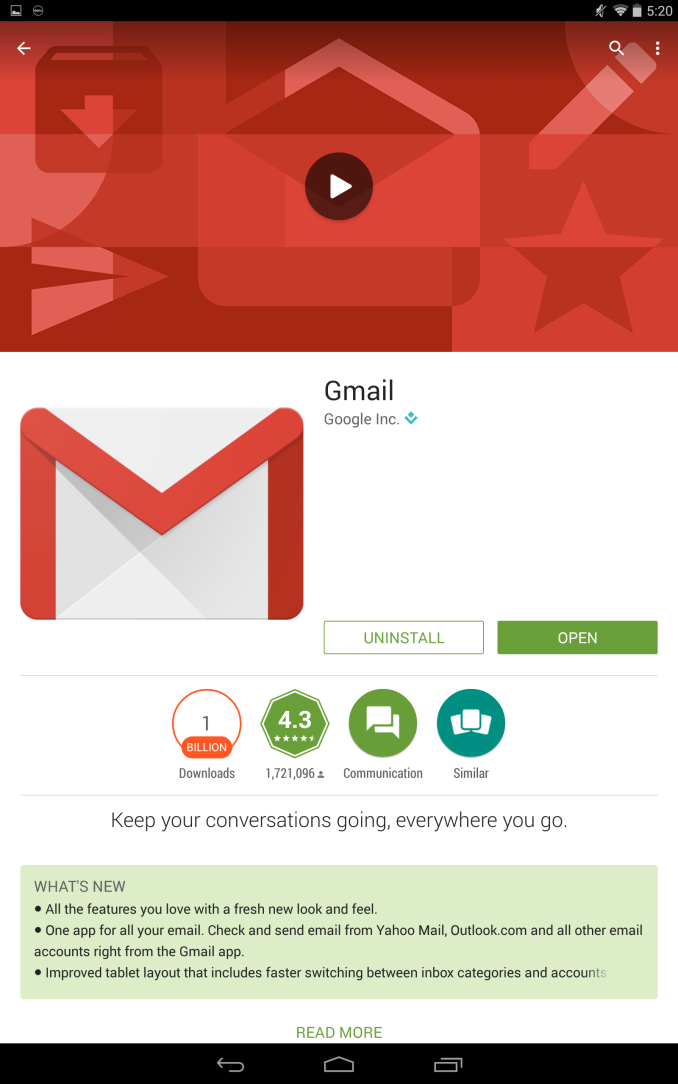
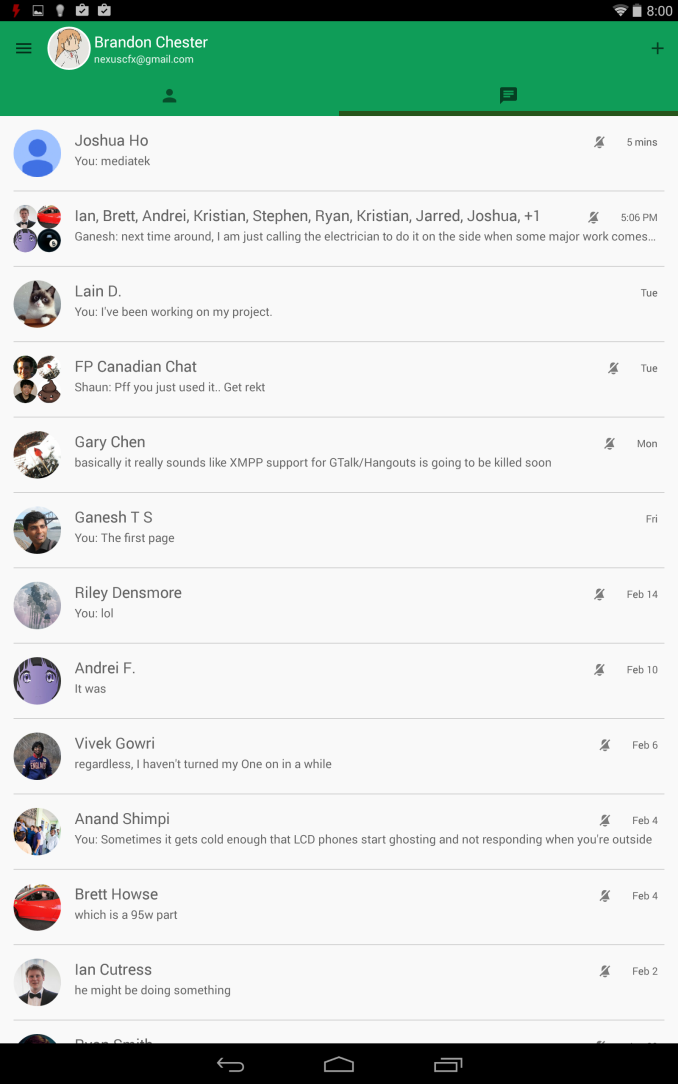
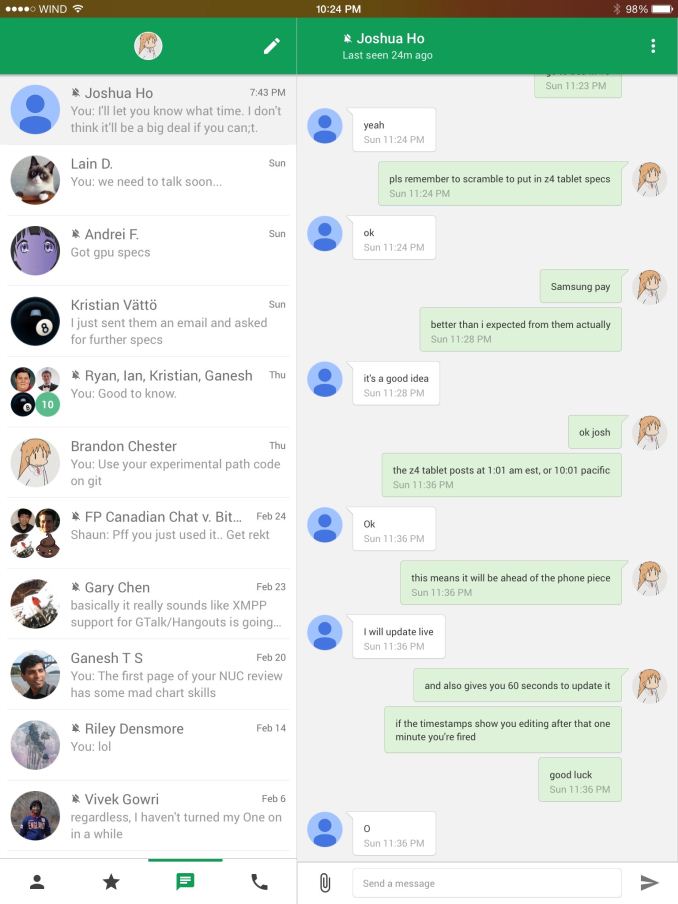
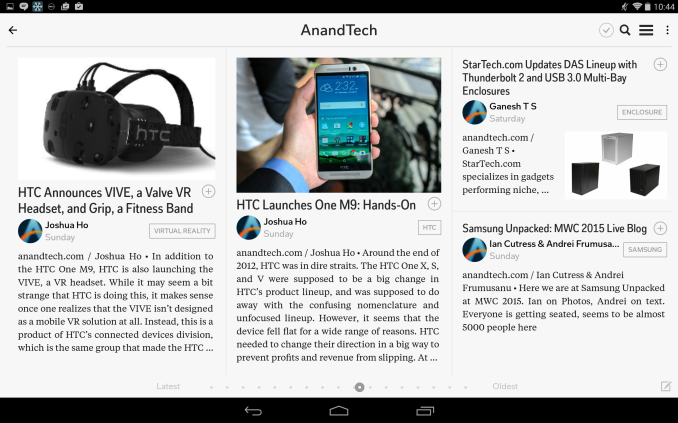








89 Comments
View All Comments
darkich - Friday, March 13, 2015 - link
"Intel will be somewhere below 5 by then."Oh I see, you're nothing but a TROLL
Michael Bay - Saturday, March 14, 2015 - link
So all you have is an eteranl looser`s excuse.Typical of ARM fanatics.
Michael Bay - Friday, March 13, 2015 - link
Oh please. Intel has to improve a much more complex architecture and simultaneously drive power consumption down, while ARM is touching the heat ceiling on current complexity. Those issues will only exacerbate in next iterations.GNUminex_l_cowsay - Thursday, March 12, 2015 - link
Considering that there isn't much you can do with a tablet besides viewing content. How could something with such a bad screen possibly be useful?extide - Thursday, March 12, 2015 - link
Wow, those CPU scores are terrible. Even nVidia can roll a custom ARM core and be faster, and I'm not even talking about the GPU part, only CPU. This is sad Intel, c'mon you're letting me down! ATOM NEEDS TO GO. Use Core-M and then for the cheaper segments Intel needs to roll a custom ARM-v8 core. It's time!djc208 - Thursday, March 12, 2015 - link
Remember that in some cases the Atom CPU has to do a real-time conversion from ARM to X86 on any app that doesn't provide an X86 build. I notice that on my MeMo Pad some things just don't run, or don't run right even though they're fine on my phone. Admittedly the MeMo has far less RAM, but it's still glitchy on some apps. But it also means that some stuff just isn't as responsive because the CPU is trying to translate and run at the same time. Which admittedly is kind of what the Tegra K1 is doing too, just without the optimization library.extide - Thursday, March 12, 2015 - link
That only happens on apps that are native code, which is basically only things like full-screen 3d games. All of the main google apps, browsers, and common stuff you use is java, so it has no additional translation overhead compared to running on ARM.However, the truth is that it's the end result that matters.
tipoo - Thursday, March 12, 2015 - link
Browsers aren't java, they're native.staiaoman - Thursday, March 12, 2015 - link
and THIS is why we patiently wait for anand's review before buying a tablet, instead of going off of the "FIRST!" articles from other sites. Well done, guys. Thorough as always.Refuge - Friday, March 13, 2015 - link
Haha agreed, they are my guiding light.